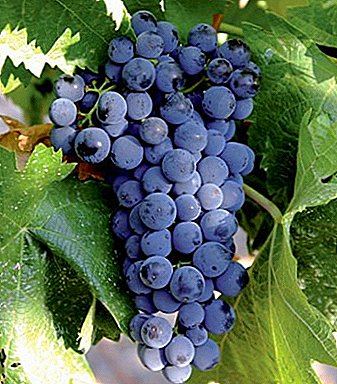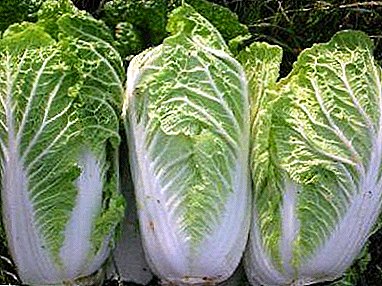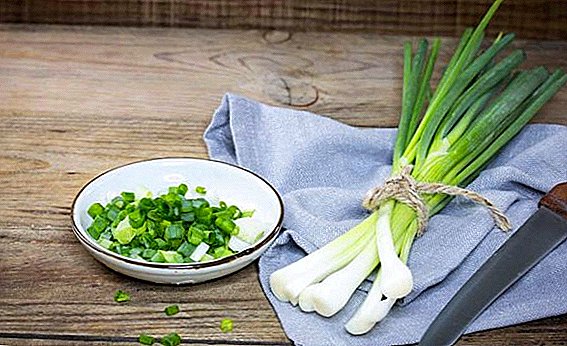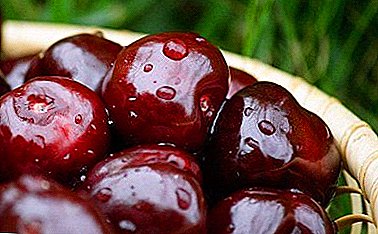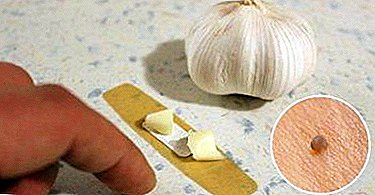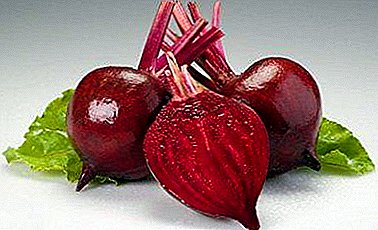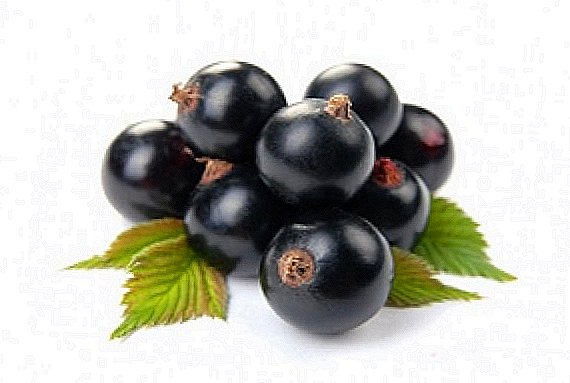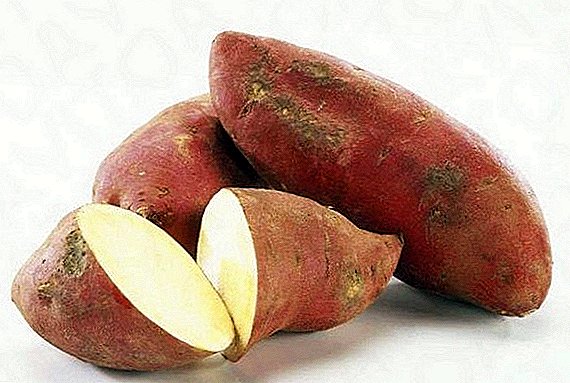
Along with potatoes, tomatoes, corn, sunflower and other cultures from America, the yacon was brought to us. This little-known vegetable in our country is similar in its qualities to Jerusalem artichoke, which has been grown for a long time and is quite familiar to many gardeners. Let's get acquainted closer with this cultural plant, rare for us.
Description
Yacon He was cultivated by residents of Latin America living in the Andes mountains for its tubers. In this plant, two types of roots are formed - large rhizomes and pear-shaped or spindle-like brownish tubers that grow on rhizomes in groups of several units. These nodules inside are white or yellowish, have a sweetish flesh with a pleasant taste, reminiscent of apple and watermelon, can weigh 300-600 grams each.
On the rhizomes are also buds, from which grow new plants. This perennial culture from of the Astrov family, similar to topinambur and sunflower simultaneously. Annual cultivar plant can reach 1.2-2.5 meters. The green stem has a fringe and reddish spots. The leaves are large, triangular in shape, with a strong long petiole and notched edges.

Yacon blooms usually in the sixth month from planting with yellow or orange baskets resembling small sunflowers.
Did you know? Locations of wild yakon are Colombia, Ecuador and Peru. In ancient times, it was grown by the Incas in fairly large volumes, but was not the main crop. He was often taken to travel as a source of water. Now it is grown on an industrial scale in many countries (USA, Japan, Australia, etc.) as an inulin-containing culture.
Yacon attracts interest primarily from its high content of inulin. The advantages of this culture are larger than those of Jerusalem artichoke, tubers, which can be stored about as well as potatoes, as well as higher taste.
In cooking most useful to apply it raw, for example, in salads. But it can also be boiled, fried, stewed, dried and even made chips from it, which will be much more useful than potato chips. Juice, jam, candied fruits and syrup are also made from it.
Root crops include beets, carrots, turnips, radishes, radishes, turnips, parsnips, celery, parsley, rutabaga, scorzonera, and daikon.
Composition
Yakon low-calorie: in 100 g of tubers 61 kcal are contained.
Its nutritional value and basic composition:
- water - 79 g;
- carbohydrates - 12.8 g;
- dietary fiber - 4.5 g;
- proteins - 2.1 g;
- Ash - 1.4 g:
- fats - 0.1 g;
- organic acids - 0.1 g
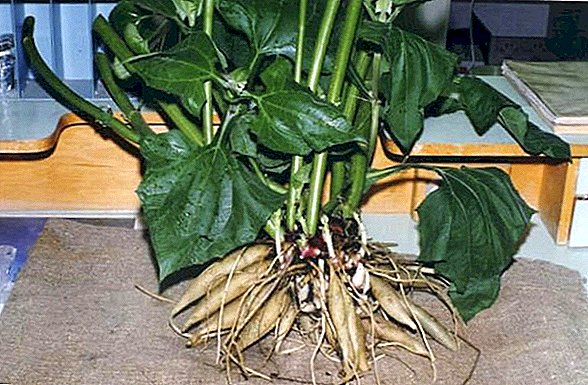
Also in 100 g are the following vitamins:
- C - 6 mg;
- PP - 1.6 mg;
- Niacin, 1.3 mg;
- E - 0.2 mg;
- B1 - 0.07 mg;
- B2 - 0.06 mg;
- A - 0.002 mg;
- beta carotene - 0,012 mg.
- potassium - 200 mg;
- phosphorus - 78 mg;
- calcium - 20 mg;
- magnesium - 12 mg;
- sodium, 3 mg;
- aluminum 0.815 mg;
- iron - 0.4 mg.
Important! Yacon, which is grown at 56 ° north latitude, does not have inulin and sugars, which are replaced by fruit, which makes the use of this vegetable is not so useful.
Carbohydrates are mainly starch and dextrins (9.6 g), sugars (3.2 g). Yacon also contains amino acids that are indispensable for humans and inulin, which is a prebiotic and is hardly absorbed by the body.

Beneficial features
Yacon has the following beneficial properties:
- normalizes sugar level. It contains a large amount of inulin, which replaces sugar with itself;
- struggling with excess weight. It is low-calorie and contains substances that have a good effect on metabolism. For a long time quenches hunger;
- removes excess fluid. A large amount of potassium provides a diuretic effect;
- is an antioxidant. It consists of bioactive substances that slow down aging;
- reduces the amount of cholesterol in the blood. It has a positive effect on the cardiovascular system;
- improves intestinal function, helps with constipation. It contains many fibers that stimulate the gastrointestinal tract, as well as a prebiotic that activates the growth of beneficial microflora.
Contraindications and harm
There are no special contraindications to this vegetable, except for individual intolerance, which is rare.
However, when consuming yacon in large quantities, the following symptoms may occur:
- weak stools, diarrhea;
- frequent urination;
- flatulence;
- poor appetite;
- allergic rhinitis, which is characterized by sneezing and irritation of the mucous eyes.

It should be noted that in our places this vegetable and its effect on humans, including side effects, are little studied.
Did you know? Yacon syrup is an excellent sugar substitute for diabetics and people who want to lose weight. Its taste is reminiscent of maple syrup with melissa. But it is produced only in industrial conditions, and its price is quite high.
Breeding
This is a perennial plant, but we have it planted annually. Yacon can be propagated in several ways:
- seeds. So it is often propagated at home - in South America. But for our latitudes such a method is impossible, since here it does not have time to bloom and give seeds;
- rhizomes. This is the most common method used everywhere. To this end, in early February, the yakon rhizomes are taken from the basement, where they were stored, washed in a weak solution of potassium permanganate. Then they are cut so that one or two buds remain on each piece, dusting the incision site with ashes. Planted in a container of about a liter diameter of 30 cm in the ground, consisting of sod land and peat in a ratio of 1 to 2, watered and covered with a film until germs. Feed sprouts every ten days with complex fertilizers;
- green cuttings. For grafting take areas of the stem with two leaves and placed in a nutrient substrate. Around create a greenhouse effect, covering the glass container and moisturizing. After the appearance of the roots, this capacity is removed, and the cuttings are transferred to greenhouse conditions, where they are kept at a temperature of + 20 ° C and a light day at about 16 hours before planting into the ground.
Landing
Planted seedlings in the ground need only after the end of frost. The root system of the aacon can tolerate slight frosts, but the upper part will die in this case.

Landing is best done from the end of May to the tenth of June. Put on a depth of about ten centimeters. Yacon grows on any soil, the main thing is to fertilize it well. Therefore, before planting, the soil should be loosened, and further it is recommended to make top dressing from manure with mineral additives. To this end, one-third of a spoonful of superphosphate and potassium is added to a third of the bucket of manure.
Yacon seedlings are planted at a distance of about 70 cm from each other. Immediately after planting, perform good watering. As it grows, this crop starts its roots deep in the ground, so it can endure drought, though not long. But during planting and rooting the plants need more thorough watering. In dry weather, the Yacon is watered daily, and with the onset of autumn the frequency is reduced. Watering is desirable to carry warm water.
Important! Yacon loves light: it is better for him to choose well-lit areas of the garden. The plant, planted in the shade, develops poorly and reduces yield. It should also be noted that with the growth and thickening of the aacon, the yield also decreases.The optimum air temperature for the growth of this plant is from + 18 ° C to + 30 ° C. This culture is quite moisture-loving and grows well at a humidity of 60-70%.
Care
Yacon, like many plants, needs feeding - it increases its yield and accelerates growth. For this purpose, once a month produce complex nutrition with mineral fertilizers. Organic fertilizers are applied to the soil during planting: this can be bird droppings, cow dung. During the loosening of the soil is not superfluous to enrich it with nitrate. It should be noted that this culture is very much in need of potassium, and less in phosphorus and nitrogen.

The soil on the plot on which the yacon is planted, it is necessary to periodically loosen and weed. You can spend the mulching of the soil. The shrubs of this plant usually spud like potatoes. If necessary, and especially if the area is very windy, you can make a garter of this plant.
The yacon can be affected by pests such as whitefly, aphid, spider mite, caterpillar, Khrushchevand other insects. In addition, it may be subject to fungal diseases.
This culture does not require transplantation and can grow for a long time in the same area. It is better to move this plant from one place to another in the spring.
Collection and storage
To get a good harvest, the age of the plant should be 5-7 months. Harvesting Yacon produce in the fall shortly before the first frosts. It is necessary to dig up its tubers carefully, as they are rather fragile.

Tubers are harvested separately for food consumption, and the roots for later reproduction are laid for wintering. For this purpose, the rhizome is cut so that there are available buds and a stem about 2-3 centimeters in size. The roots are dried in a dry dark room for about two weeks, and then placed in wooden boxes and poured over with earth. Store in the basement at a temperature of + 4 ° C. Under such conditions, the roots can be stored almost until the next harvest.
Did you know? Only collected Yacon nodules have an unleavened taste. It is not recommended to eat earlier than a month after digging. With the time of storage, their taste changes, it becomes sweeter and more pleasant. They have the best taste in the third month of storage. This process can be accelerated by placing dried roots in the sun for several days.
Video: Yacon Collect
Lovers of Jerusalem artichoke will certainly be interested in this rare vegetable for us. It has the same beneficial properties, but can still be stored for a long time and has an interesting and pleasant taste. It is most useful to put it in salads, but you can cook many other dishes with his participation. Yacon improves metabolism and is a useful component in the menu of diabetics.


